Bone loss accelerates in the few years around menopause-often 1-2% of bone mineral density each year, with the first 5 years being the steepest. That’s why fractures jump right when hot flushes show up. The fix isn’t mystery pills; it’s getting the basics right every day: enough calcium and vitamin D, smart training, and a clear plan for checks and treatment if you need it. I’ll walk you through the exact steps and help you avoid the common traps women hit in their 50s and 60s.
This guide is for women looking for straight answers on menopause bone health. I live in Adelaide, so I’ll sprinkle in Australian specifics-our sun, our guidelines, our Medicare rules-without wasting your time.
TL;DR / Key takeaways
- Target 1300 mg calcium/day after 50 (NHMRC). Prioritise food first; use supplements to top up, not replace meals.
- Vitamin D matters: aim for serum 25(OH)D ≥50 nmol/L (75 if you have osteoporosis), often 800-1000 IU/day helps, especially in winter in southern Australia.
- Train your bones: 2-3 resistance sessions/week + regular impact (as safe for you) + daily balance work. Walking is great for the heart, not enough for hips and spine.
- Scan when it counts: DEXA is recommended if you’re 70+, or 50-69 with risk factors (fracture after 50, steroid use, early menopause, low weight). Use FRAX or Garvan to discuss risk with your GP.
- Medications work when diet/training aren’t enough. Don’t stop denosumab without a plan; review calcium, vitamin D, and dental health before antiresorptives.
Step-by-step: how to maintain bone health during and after menopause
Think of this as your weekly checklist. Keep it simple. Keep it consistent.
Hit your daily calcium target.
- Women 51+: aim for 1300 mg/day (Australian NHMRC). If you’re 45-50 and perimenopausal with low dietary intake, start nudging up now.
- Quick rule: 3-4 serves of dairy/fortified alternatives per day usually gets you there. One serve ≈ 300 mg calcium (e.g., 1 cup milk, 200 g yoghurt, 40 g hard cheese, 1 cup calcium-fortified soy milk).
- If food gets you only ~700-1000 mg, consider a 300-500 mg supplement to fill the gap.
Secure your vitamin D.
- Target blood level: ≥50 nmol/L; ≥75 nmol/L if you have osteoporosis or a fracture history (Healthy Bones Australia).
- In Adelaide: summer UV is strong-short exposures outside peak UV are plenty. In winter, aim for midday sun to face/arms for 10-20 minutes most days if your skin safely tolerates it. Balance with skin cancer risk; use the SunSmart app as a guide.
- Supplement 800-1000 IU (20-25 micrograms) daily if your level is low or you’re not getting much sun. Re-check bloods in 3 months.
Train bones like you mean it.
- Resistance: 2-3 days/week, 8-10 exercises covering legs, hips, back, and arms. Aim for challenging loads you can lift 6-12 reps with good form. Progress the weight every 2-3 weeks.
- Impact: add short bursts if safe-step-ups, brisk stair climbs, low-height hops or heel drops. If you have diagnosed osteoporosis or back pain, get a physio plan first.
- Balance: 5-10 minutes daily. Single-leg stands, tandem walking, Tai Chi. Reduces falls risk by 20-30% in trials.
Dial in protein and lifestyle extras.
- Protein: 1.0-1.2 g/kg/day (e.g., 65-78 g for a 65 kg woman). Spread across meals.
- Limit sodium to keep calcium in your bones: aim for ≤2000 mg sodium/day (≈5 g salt).
- Caffeine: up to ~3 coffees/day is fine if calcium is adequate. Space calcium supplements 2+ hours from your coffee.
- Alcohol: stick to Australian guideline-no more than 10 standard drinks/week, max 4 per day, and lower is better for bone.
- Stop smoking. It speeds up bone loss.
Know when to test and treat.
- DEXA bone density scan: Medicare-subsidised for most Australians if you’re ≥70, or 50-69 with risk factors (fragility fracture after 50, prolonged steroids, early menopause <45, low BMI, certain medications like aromatase inhibitors).
- Bloods: vitamin D, sometimes calcium (corrected for albumin), kidney and thyroid function if there are flags. Serum calcium won’t tell you if your diet is short, but it matters for safety.
- Discuss meds with your GP if you have osteoporosis or high FRAX/Garvan risk: options include bisphosphonates (alendronate, risedronate, IV zoledronic acid), denosumab (6‑monthly injection), raloxifene, menopausal hormone therapy (best if started <60 or within 10 years of menopause), and anabolic agents (teriparatide or romosozumab) for severe disease. Each has pros/cons.
Supplement smart if needed.
- Calcium carbonate (40% elemental) is cheap and best with meals. Calcium citrate (21% elemental) absorbs well with or without food; good if you use PPIs or have low stomach acid.
- Keep single doses ≤500-600 mg. If you need more, split morning/evening.
- Common side effects: constipation (take with water; add fibre/magnesium-rich foods). Kidney stone history? Talk to your GP; don’t overshoot, and drink enough water.
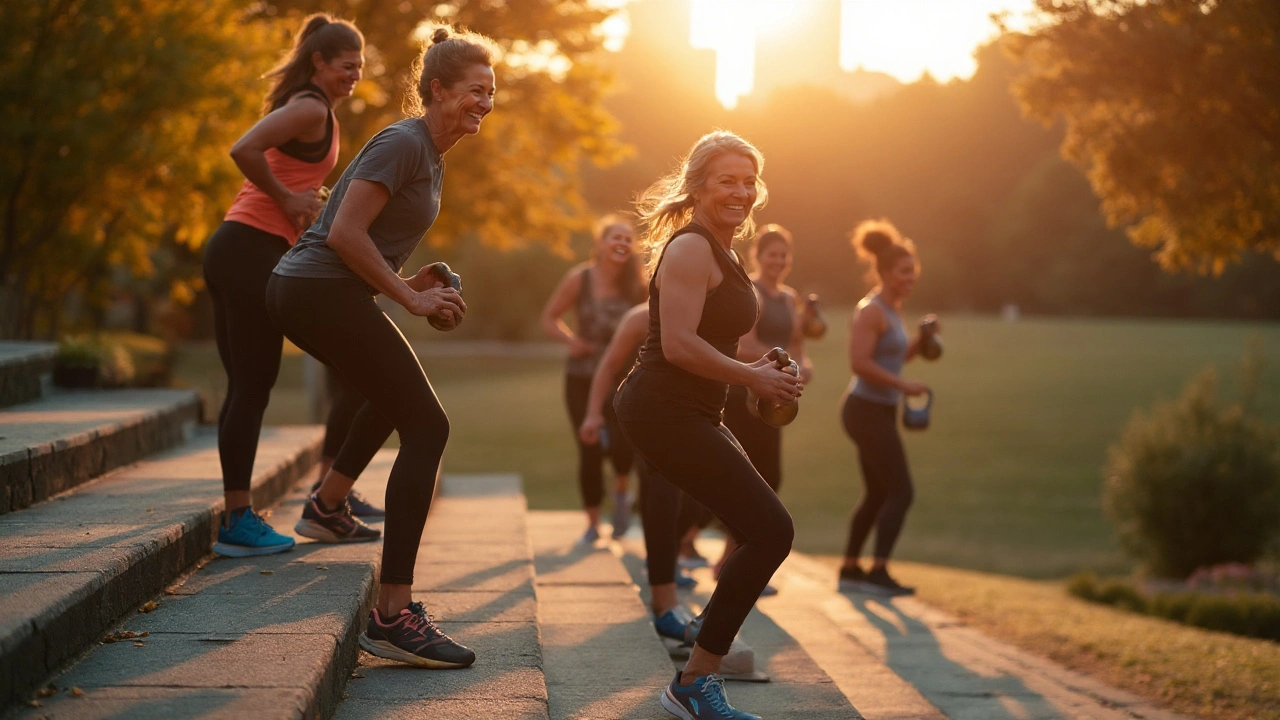
Real-world examples, food swaps, and a weekly plan
Food first makes your bones happier than tablets. Here’s how to build calcium into what you already eat.
Breakfast swaps:
- Oats with 1 cup calcium-fortified soy milk (≈300 mg) + chia and berries.
- Greek yoghurt (200 g ≈ 300-400 mg) with fruit and a sprinkle of almonds.
- Wholegrain toast with cottage cheese (½ cup ≈ 150 mg) and tomato.
Lunch moves:
- Salmon salad with tinned salmon (with bones) 90 g ≈ 250-300 mg; add leafy greens.
- Tofu stir-fry (calcium-set tofu 100 g ≈ 250-350 mg) with broccoli and sesame.
- Cheese and veggie omelette: 40 g cheddar ≈ 300 mg.
Dinner ideas:
- Chicken and bean chilli with a side of coleslaw and a dollop of yoghurt.
- Lentil dahl with spinach; end with a milk-based chai.
- Sardine pasta with lemon and parsley; side salad.
Snacks that pull weight:
- Latte with dairy or fortified soy (≈300 mg).
- Weet-style biscuits with fortified milk.
- Handful of almonds (30 g ≈ 70-80 mg) plus a kiwi.
| Food/Serve | Approx. Calcium (mg) | Notes |
|---|---|---|
| Milk (1 cup, dairy or fortified soy) | 300 | Check label for plant milks; aim ≥120 mg/100 ml |
| Yoghurt (200 g) | 300-400 | Greek styles often higher |
| Cheddar cheese (40 g) | 300 | Hard cheeses pack calcium |
| Tofu, calcium-set (100 g) | 250-350 | Look for calcium sulphate (E516) in ingredients |
| Tinned salmon or sardines (90 g, with bones) | 250-350 | Soft, edible bones are the calcium source |
| Almonds (30 g) | 70-80 | Good add-on, not a main source |
| Broccoli (1 cup cooked) | 60-90 | Every bit helps, but volume adds up |
A simple weekly training template:
- Mon: Lower body strength (squats or leg press, deadlift variation, step-ups), 3 sets of 6-10 reps; finish with 5 minutes of balance drills.
- Wed: Upper body and spine (rows, presses, pulldowns, back extensions), 3 sets of 8-12 reps; 3 x 20-30 second heel drops if safe.
- Fri: Mixed circuit (lunges, hip hinges, push-ups, carries), then 10 minutes of fast stair climbing or short hill repeats.
- Daily: 5-10 minutes balance: single-leg stands while brushing teeth, tandem walk along a hallway line.
If you have diagnosed osteoporosis or a history of fractures, ask a physio for a load-safe program. Avoid deep, loaded spinal flexion (e.g., rounded-back sit-ups) and twisting under heavy load.
Supplementing without guesswork:
- If you eat 2 serves of calcium foods (≈600 mg), take a 500 mg calcium supplement with dinner to land near 1100 mg; add one extra food serve to reach 1300 mg.
- Already hitting 3-4 serves? Skip daily calcium tablets; rely on diet and keep vitamin D in range.
- On a PPI (omeprazole/esomeprazole) or have low stomach acid? Choose calcium citrate over carbonate.
Checklists, cheat sheets, and decision guides
Use these as quick screens so you don’t overthink it.
Daily calcium quick count:
- 1 cup milk or fortified soy = +300 mg
- 200 g yoghurt = +300-400 mg
- 40 g hard cheese = +300 mg
- 100 g calcium-set tofu = +250-350 mg
- 90 g tinned salmon/sardines with bones = +250-350 mg
- 30 g almonds = +70-80 mg
Medication timing rules (to avoid blocking absorption):
- Separate calcium supplements from thyroid meds, iron, tetracyclines/quinolones, and oral bisphosphonates by at least 2-4 hours.
- Take alendronate/risedronate first thing with water, then wait 30-60 minutes before food, drink, or calcium.
Food vs supplement decision guide:
- Do you have 3-4 calcium-rich serves daily? Yes → skip routine calcium tablets; keep vitamin D and training on point.
- No → add 1-2 serves first. Still short? Add a 300-500 mg calcium supplement with a meal.
- Constipation on carbonate? Switch to citrate, increase water/fibre, or split the dose.
| Need | Good Options | When to Choose | Watch-outs |
|---|---|---|---|
| Vitamin D | 800-1000 IU/day (20-25 μg) | Low sun exposure, winter in SA, level <50 nmol/L | Recheck blood in ~3 months; higher doses only if prescribed |
| Calcium supplement | Carbonate (with meals), Citrate (with/without food) | Diet <1000-1200 mg/day despite effort | Split doses ≤600 mg; separate from meds; constipation/stone risk |
| Bone meds | Bisphosphonates, Denosumab, HRT, Raloxifene, Teriparatide, Romosozumab | Osteoporosis on DEXA or high fracture risk | Dental check before antiresorptives; plan when stopping denosumab |
Australian specifics you can actually use:
- DEXA access: Many women 70+ get Medicare-subsidised scans. Ages 50-69 may qualify with risk factors like prior fracture, steroid use, or early menopause. Ask your GP and mention FRAX or Garvan risk.
- Targets: NHMRC calcium RDI for women 51+ is 1300 mg/day. Healthy Bones Australia suggests vitamin D ≥50 nmol/L (aim 75 for high risk).
- Labels: Australian supplements are TGA-listed (AUST L). Check elemental calcium per tablet, not just the compound.
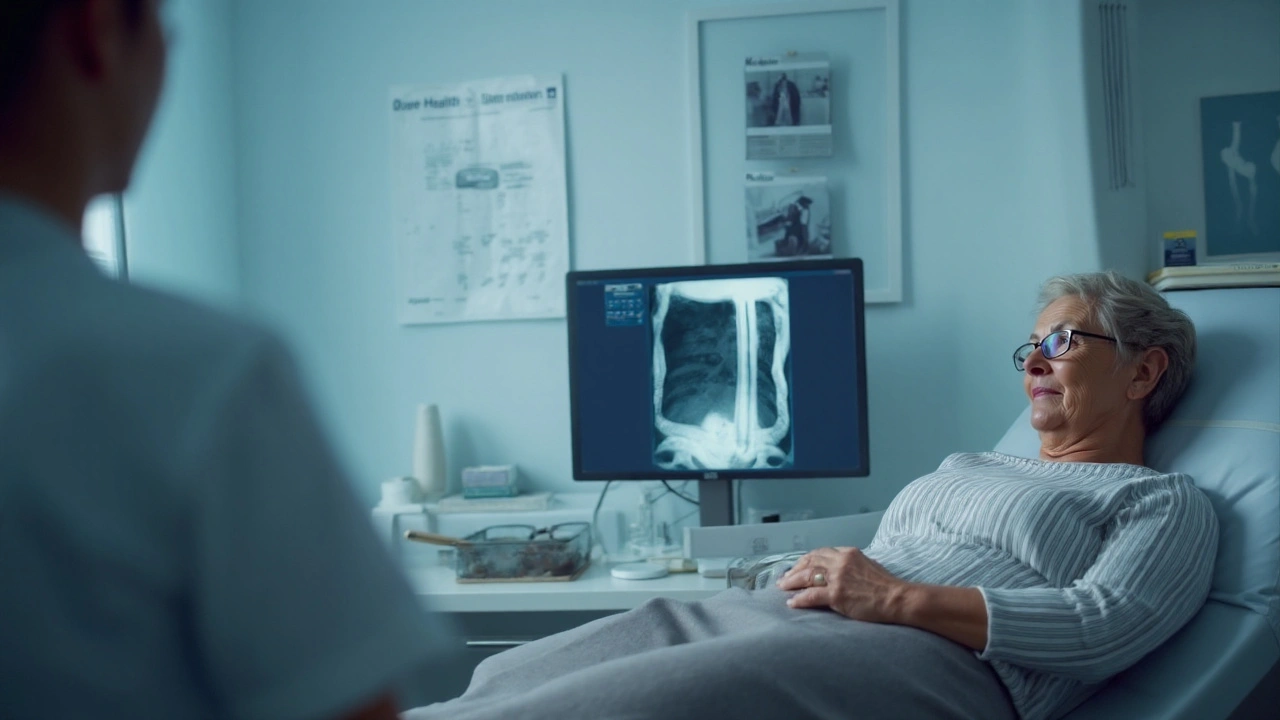
Mini‑FAQ and next steps
What are the early signs of calcium deficiency?
Dietary shortfall usually has no obvious signs until a fracture happens. Tingling or muscle cramps can have many causes. The useful checks are your intake tally, a vitamin D blood test, and DEXA for bone status if you meet criteria.
Is a blood calcium test useful?
Serum calcium is tightly regulated and often normal even when your diet is low. It’s more about safety and certain conditions than proving you need calcium. Your GP will interpret it with albumin and other labs.
Do I need vitamin K2 or magnesium for bones?
Get magnesium and vitamin K mainly from food (leafy greens, legumes, nuts). Evidence for K2 supplements preventing fractures isn’t strong enough for routine use in Australia. If you’re on warfarin, do not start K supplements without medical advice.
What about collagen?
Collagen can help joints and skin in some studies. For bones, the heavy hitters are resistance training, sufficient protein, calcium, vitamin D, and, when indicated, prescription bone meds.
Can I take all my calcium at night?
Split it. Your gut absorbs calcium best in 500-600 mg chunks. If you also drink milk or eat yoghurt in the day, you may not need a large tablet at night.
I’m lactose intolerant or dairy-free-can I still hit 1300 mg?
Yes. Use calcium-fortified plant milks and yoghurts (check for ~300 mg per cup), calcium-set tofu, canned fish with bones, and mineral waters listing calcium on the label. Add a small supplement if your daily tally is still short.
I’m on a PPI for reflux-does that change anything?
Yes. Choose calcium citrate, which doesn’t need stomach acid for absorption. Keep vitamin D optimal and talk to your GP about the ongoing need for a PPI if bone risk is high.
Is walking enough?
It’s great for heart and mood, but it barely challenges hips or spine. Add resistance and some impact to stimulate bone.
Should I start hormone therapy just for bones?
HRT reduces bone loss and fractures, and it’s a good option if you also want relief from menopause symptoms and you’re within 10 years of your final period or under 60. If your main goal is fracture prevention and you’re older, other bone meds may be a better fit. Discuss your risks and goals with your GP.
How fast do bone medications work?
Antiresorptives reduce vertebral fracture risk within 6-12 months and hip fractures by around 18-36 months in trials. Anabolics can increase bone density faster but are reserved for severe cases. Stick with the plan-consistency matters.
Next steps by scenario:
- If you’re 45-55 and perimenopausal: count your current calcium, add one extra serve, start resistance training twice a week, check vitamin D at your next routine bloods.
- If you’re 55-70 without fractures: ask your GP to estimate fracture risk (FRAX or Garvan). If risk is moderate/high, consider a DEXA.
- If you’ve had a low-trauma fracture after 50: you’re high priority. See your GP about a DEXA, vitamin D, and treatment options. Don’t delay.
- If you’re already on denosumab: set a reminder 6‑monthly and schedule the follow‑up plan with your GP for when you eventually stop (usually a bisphosphonate to prevent rebound fractures).
Red flags and troubleshooting:
- Unintentional weight loss, back pain, or sudden height loss: see your GP. Could be vertebral fracture.
- Kidney stone history: get advice before adding calcium tablets; prefer food sources and adequate fluids.
- Constipation from supplements: switch carbonate → citrate, split doses, add fibre and fluids, consider a magnesium-rich evening meal (legumes, greens, nuts).
- Balance issues or near-falls: book a physio assessment for a targeted balance/strength program and a home hazard review.
Why trust this playbook? The targets and thresholds come from Australian and international guidance: NHMRC calcium RDIs; Healthy Bones Australia vitamin D positions; RACGP Osteoporosis guidelines (2024) for scanning and treatment; and Endocrine Society/NOF summaries on medication use. It’s the boring basics-done well-that keep hips and spines intact.
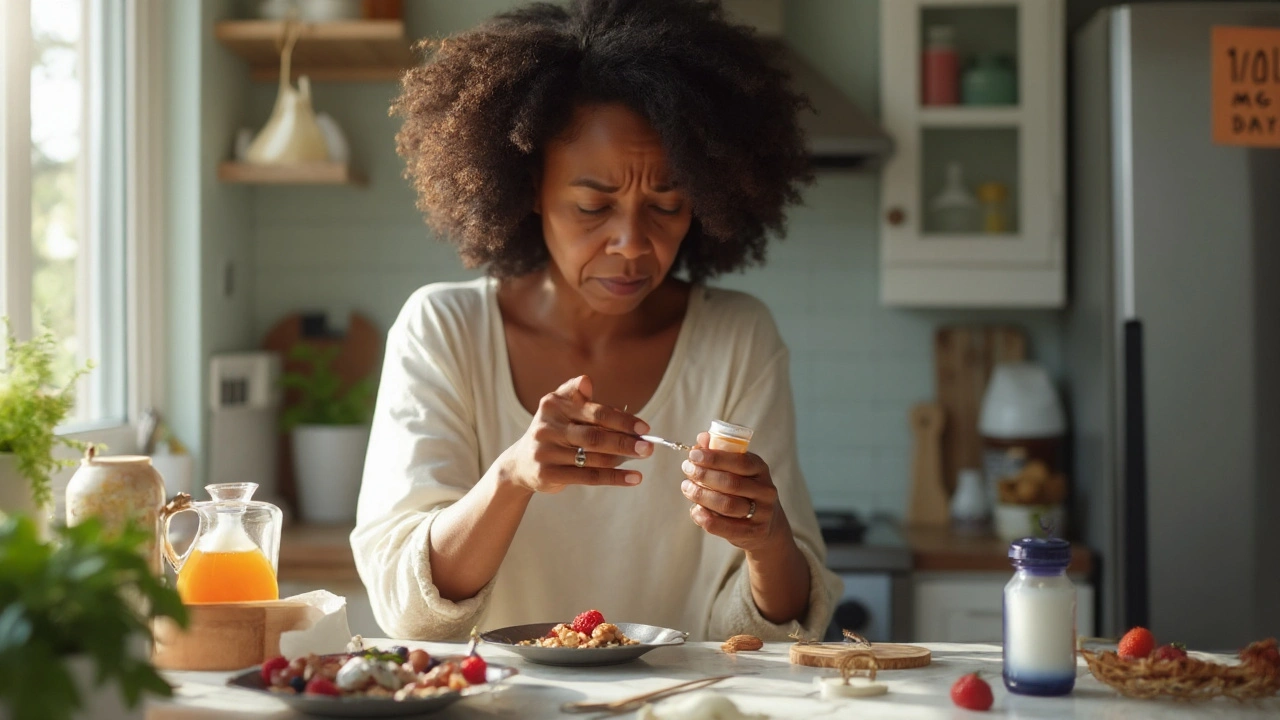
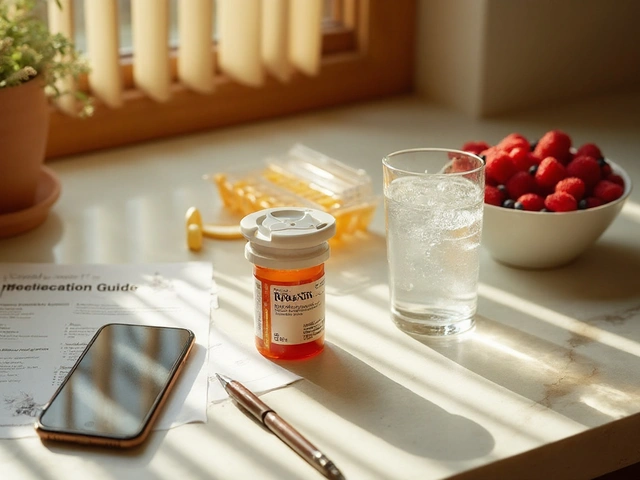




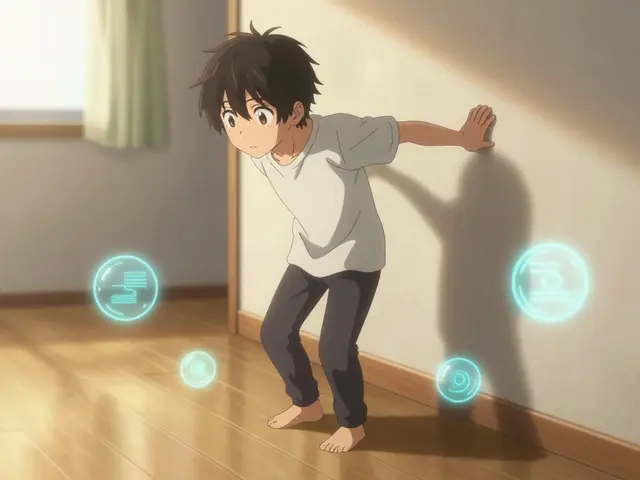


May .
I skip the supplements and just eat yogurt. Works fine.
Brian Perry
OMG I JUST REALIZED I’VE BEEN TAKING VITAMIN D AT NIGHT AND IT’S MAKING ME SLEEP LIKE A ROCK BUT ALSO I THINK I’M LOSING MY BONES???!?!?!!
Chris Jahmil Ignacio
This whole bone health thing is a scam pushed by Big Dairy and Big Pharma. They want you to believe you need calcium pills because they make billions off your fear. The real cause of osteoporosis? Glyphosate in your food and fluoride in your water. I’ve been taking magnesium and apple cider vinegar for 3 years and my DEXA scan improved. No one will tell you this because the system is rigged.
Paul Corcoran
Love this guide. Seriously. I started doing bodyweight squats and heel drops while brushing my teeth and it’s crazy how much better I feel. No more fear of slipping on the ice. Also, I switched to fortified almond milk and added a handful of almonds to my oatmeal. Small changes, big difference. You got this.
Colin Mitchell
Just wanted to say thank you for writing this. I’m 53 and was feeling overwhelmed by all the conflicting advice. This is clear, practical, and doesn’t make me feel guilty. I’m starting the resistance training this week. One rep at a time.
Stacy Natanielle
I’m concerned. The NHMRC guidelines are outdated. The WHO recommends 1000mg, not 1300. And vitamin D supplementation above 400 IU is potentially toxic. Also, why no mention of soy isoflavones? The data is compelling. And why are you ignoring the fact that dairy increases inflammation? This guide is dangerously oversimplified. 🤔🚫🥛
kelly mckeown
i read this and cried a little. not because it’s sad but because someone finally said it like it is. i’ve been doing the balance stuff for months but felt silly doing single leg stands in my kitchen. now i feel like it’s legit. thank you.
Tom Costello
Good breakdown. I’d add that in the U.S., many people don’t realize Medicare doesn’t cover DEXA scans for all women under 65 without risk factors. It’s a barrier. Also, if you’re in a northern state, winter sun exposure is nearly useless - supplementing isn’t optional. And yes, walking helps your heart, but your spine needs more. I’ve seen too many women with vertebral fractures who thought walking was enough.
dylan dowsett
Wait, wait, wait-you’re telling women to take calcium supplements?!! But what about the heart risks?!! Studies show calcium supplements increase arterial calcification by 20%!! And you’re not even mentioning K2?!! You’re literally encouraging osteoporosis and heart disease at the same time!! This is dangerous!! And why no warning about the aluminum in some calcium citrate brands?!! You need to update this immediately!!